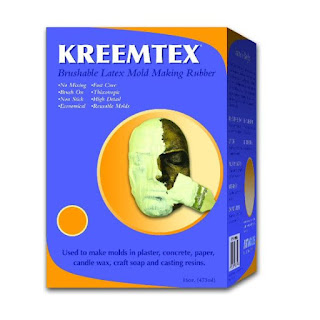The Allure of Liquid Latex
It is often hailed as the "magician's brush," is a captivating medium that has become a staple in the world of special effects and mask-making. Its fluid form enables artists to create remarkably detailed and lifelike molds, breathing life into their wildest ideas. Whether you're crafting hauntingly realistic latex mask for theater or film, or seeking to add dimension to your sculptures, this is your ultimate ally.
With its impressive flexibility and quick drying time, it allows artists to experiment and refine their designs with ease. The ability to layer and build upon the material enables the realization of intricate textures and lifelike details that make your creations stand out. From monstrous creatures to ethereal beings, it empowers artists to unleash their creativity with unparalleled precision.
Unleashing Creativity with Latex Casting Rubber
While liquid latex captures the essence of realism, latex casting rubber embarks on a different artistic journey. This medium empowers artists to craft durable and resilient molds, perfect for reproducing their creations time and time again. Whether you're delving into figurine making or replicating intricate sculptures, it ensures consistency and longevity in your art pieces.
It offers the advantage of superior tear resistance, making it a reliable choice for delicate and complex molds. Its ability to capture intricate details ensures that every cast bears the essence of the original creation. Moreover, this remarkable material is compatible with a wide range of casting materials, from gypsum to concrete, enabling artists to explore different textures and finishes.
Combining Forces: Liquid Latex and Latex Casting Rubber
The true magic unfolds when these two unite. The creative possibilities become boundless as artists can now craft intricate molds using liquid latex and then reproduce them using latex casting rubber. This synergy enables you to explore a wide spectrum of artistic expression, from crafting unique masks to producing multiple sculptures for exhibitions.
Innovative Applications and Beyond
The artistic journey with these materials knows no boundaries. Artists worldwide have pushed the limits of these materials, experimenting with mixed media, embedding objects, and exploring new textures and colors. The art community continues to be astounded by the endless opportunities that latex offers, making it a beloved medium for both novices and seasoned professionals.
Unleash Your Artistic Potential with Artmolds
Are you ready to unlock the enchanting world of liquid latex, latex mask, and latex casting rubber? Embrace the creative power of these versatile materials and bring your artistic visions to life with Artmolds! As a leading provider of high-quality art supplies, we offer a wide range of these products that are sure to inspire your next masterpiece.
Visit us today at https://www.artmolds.com/ and experience the transformative capabilities of these materials. Elevate your artistry, indulge your imagination, and let your creativity flow like never before. Unveil the magic of latex and take your artistic endeavors to soaring heights with Artmolds!










